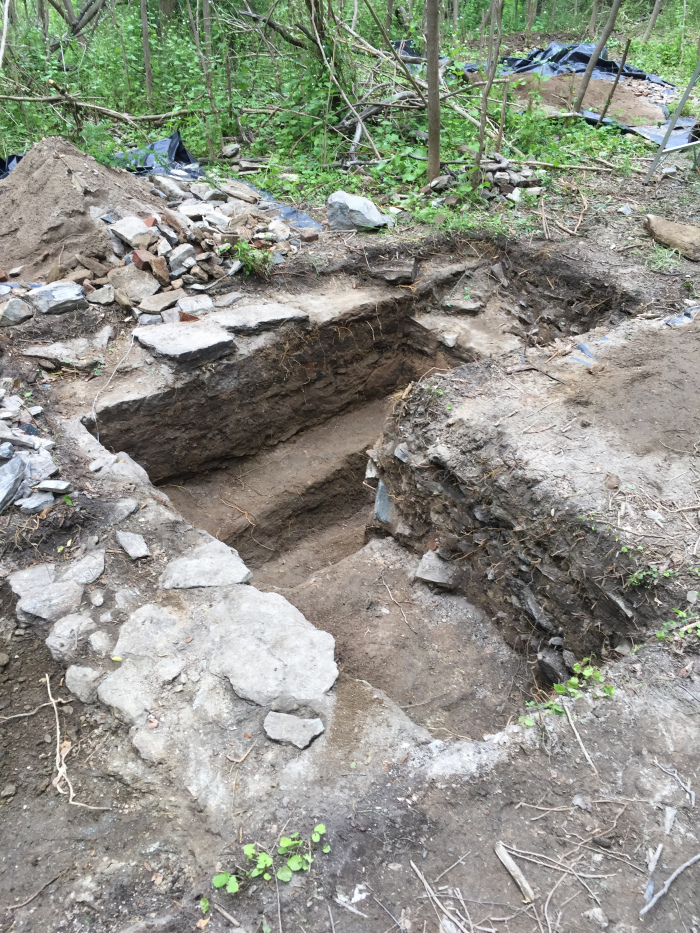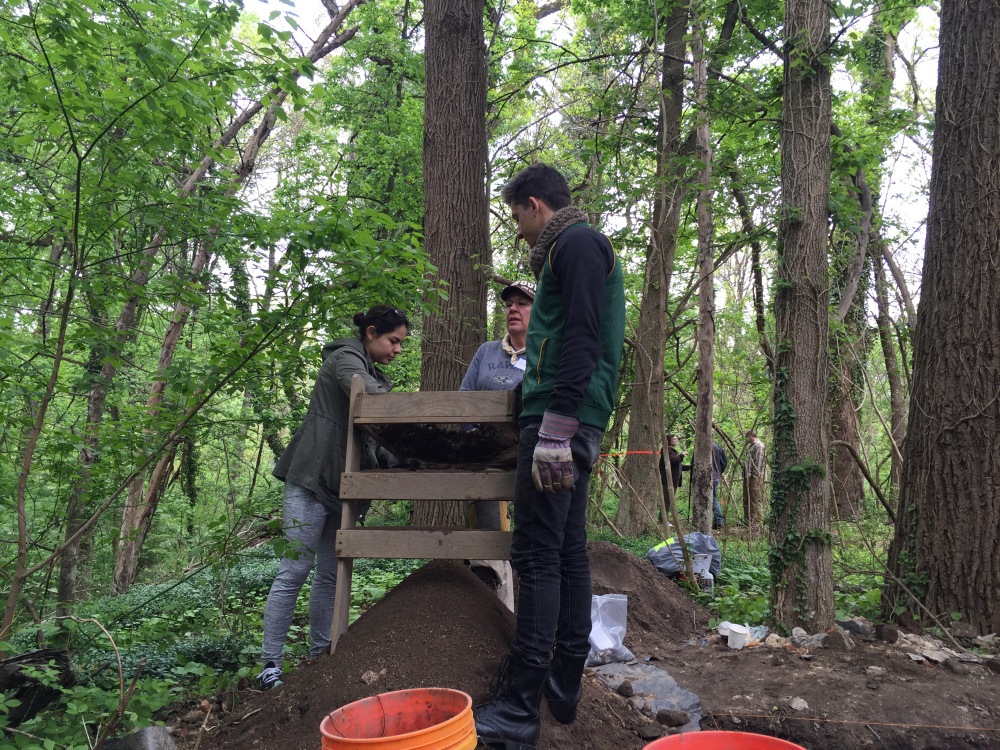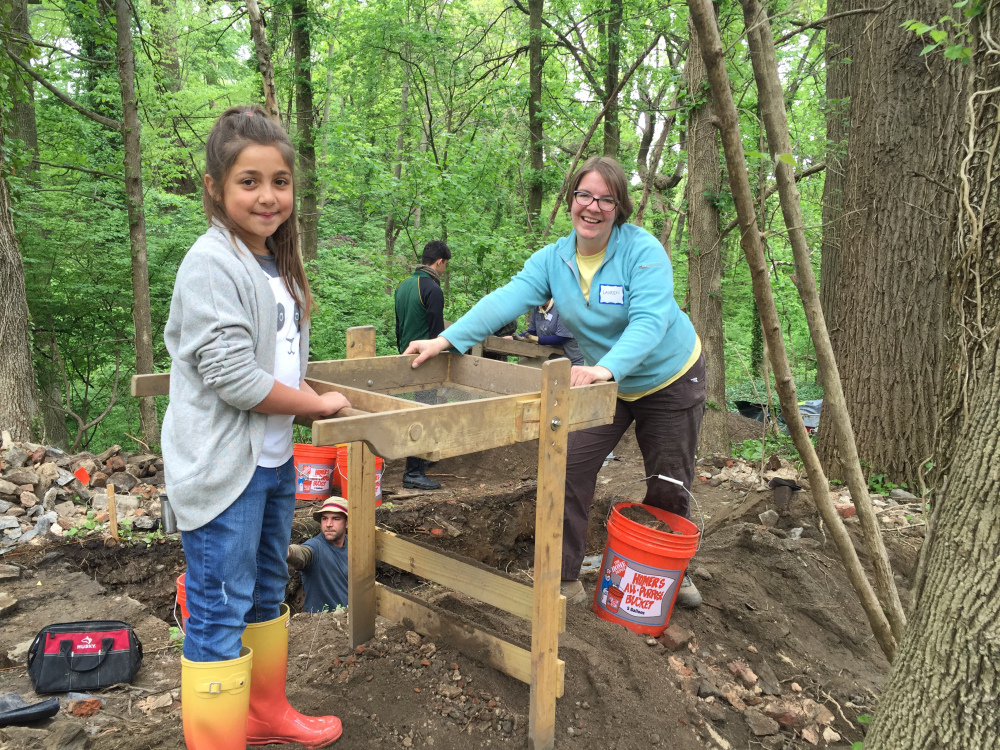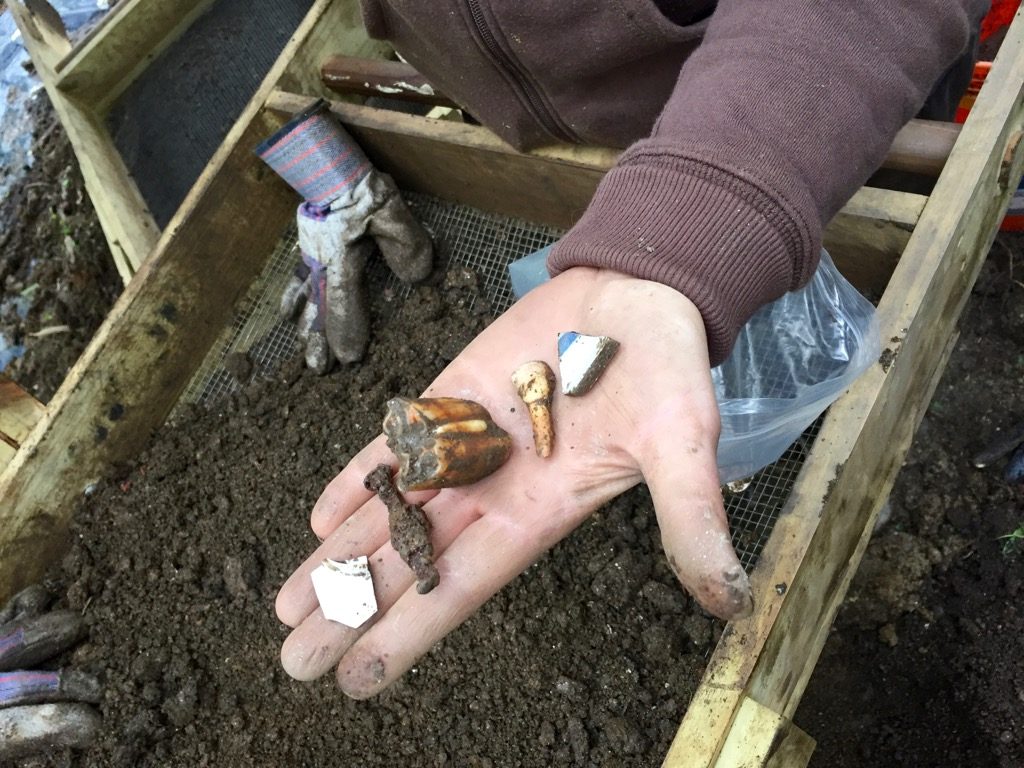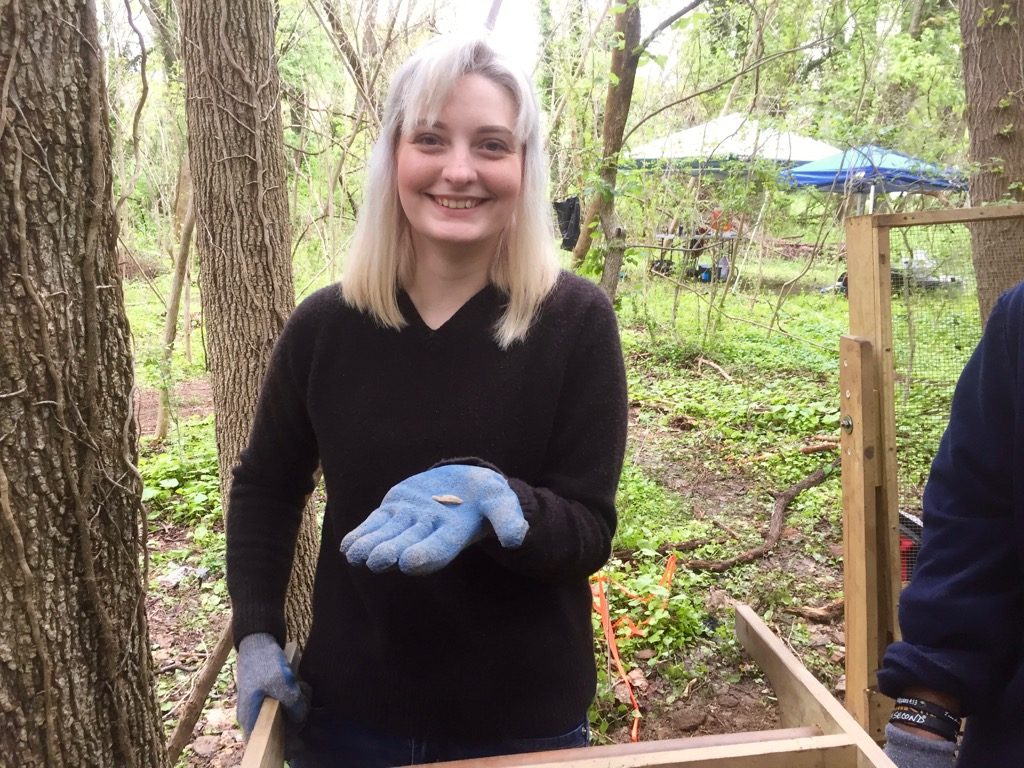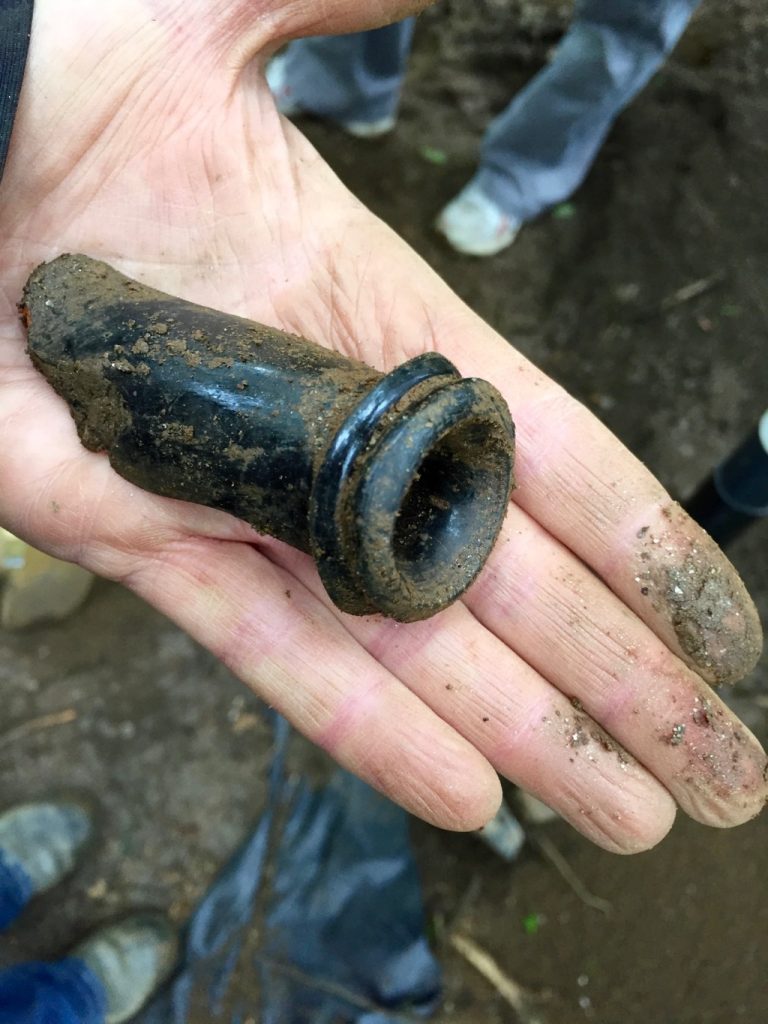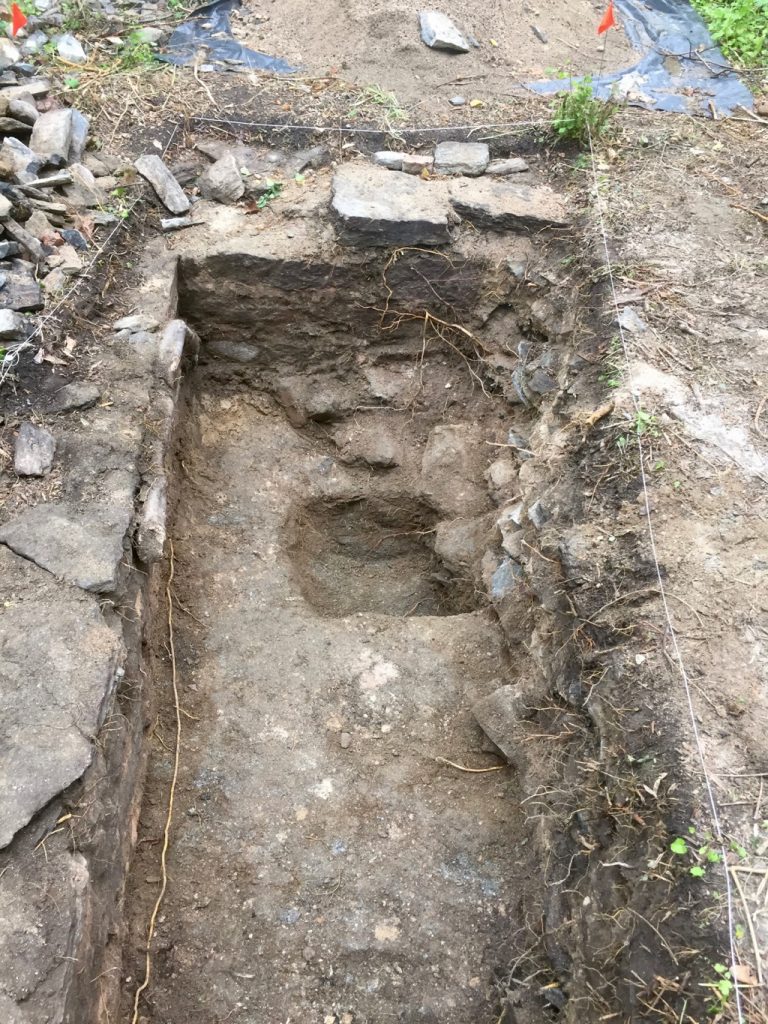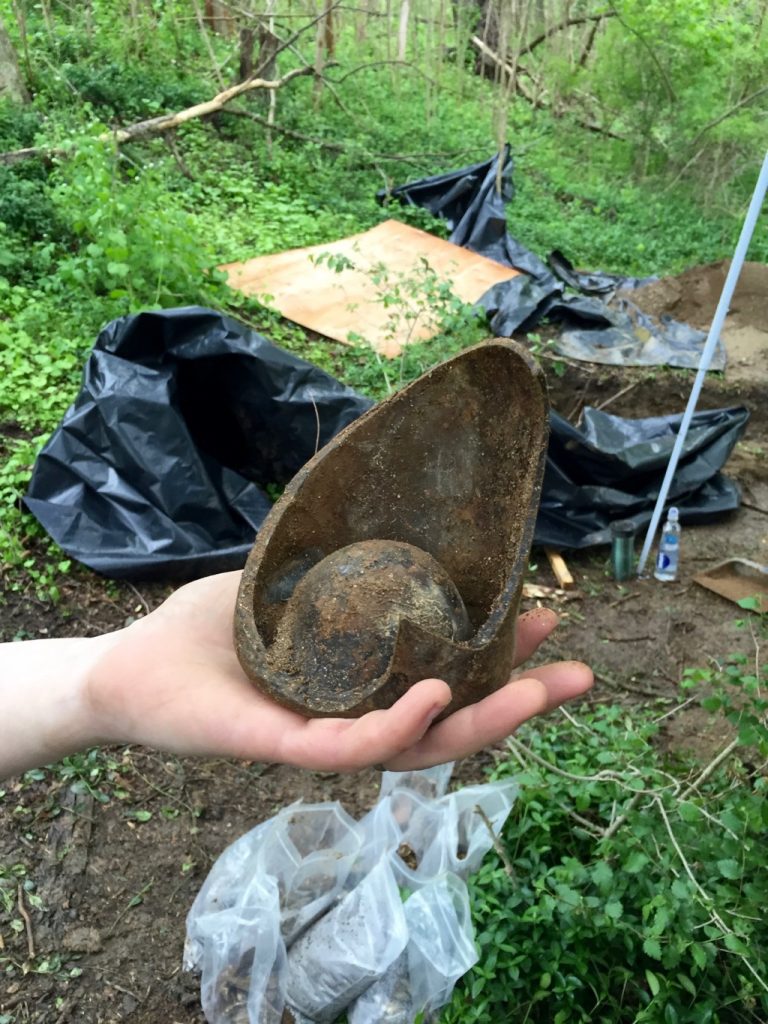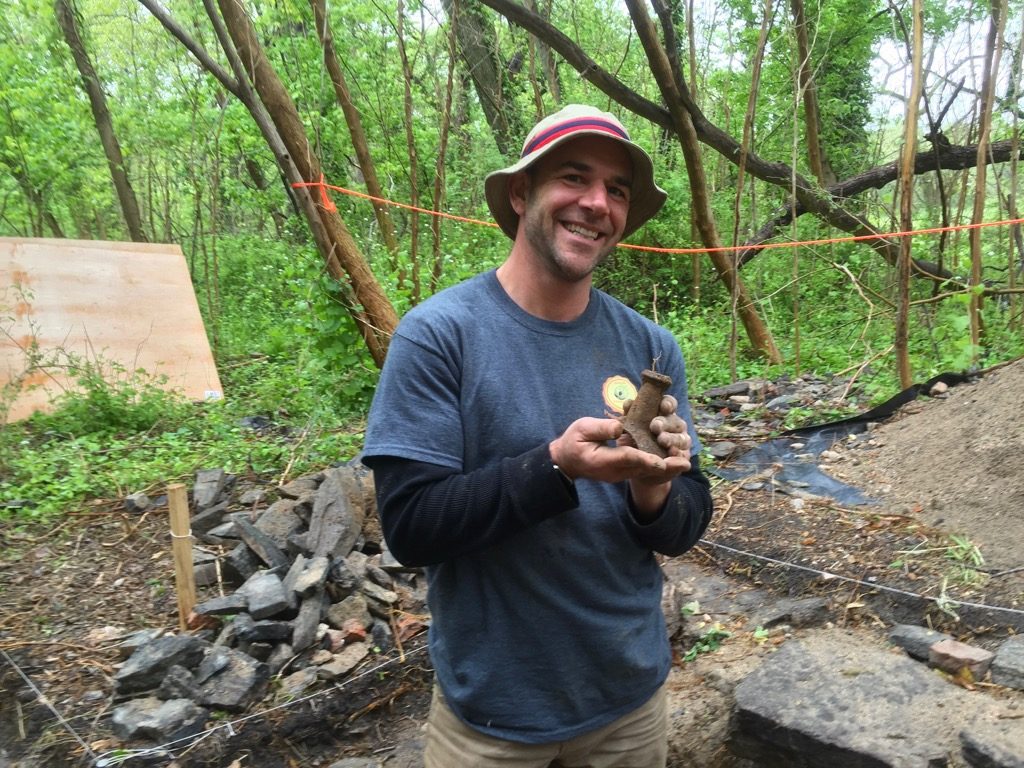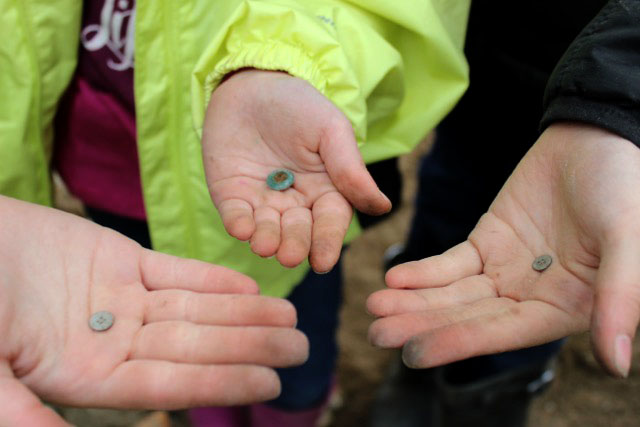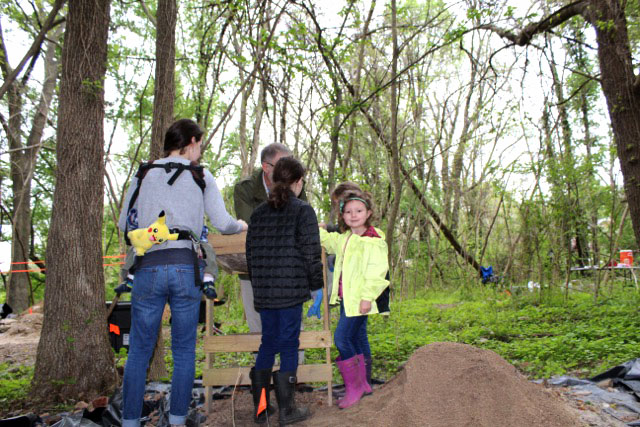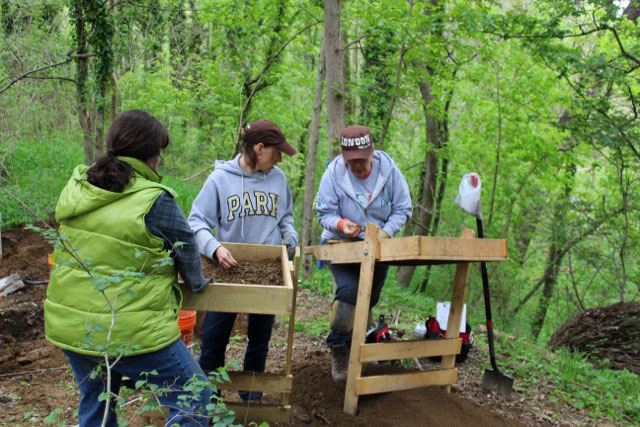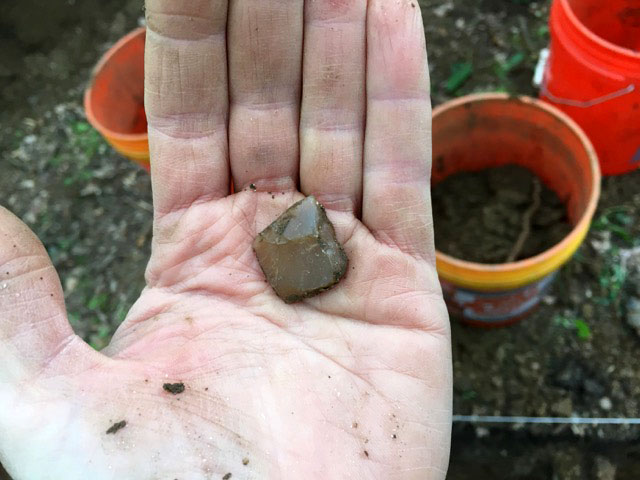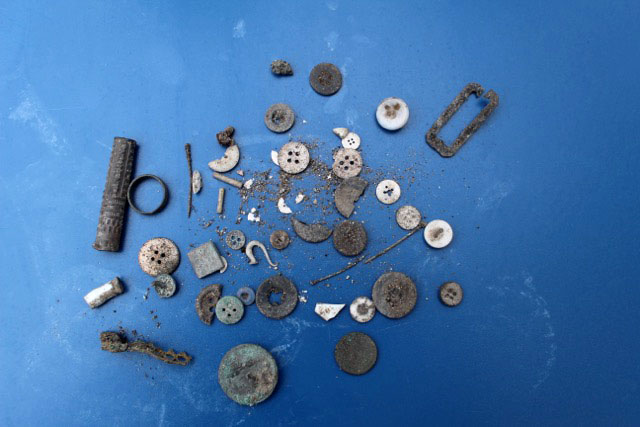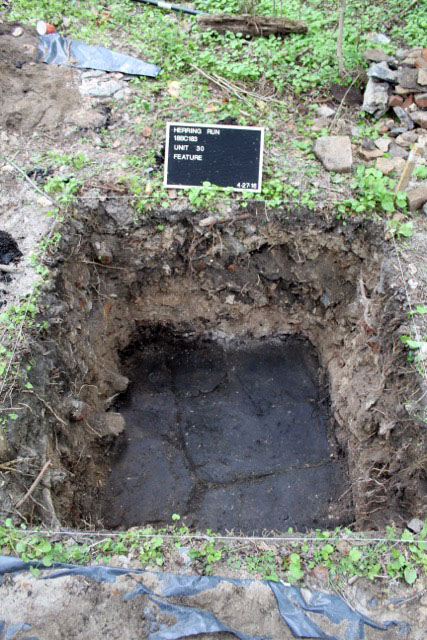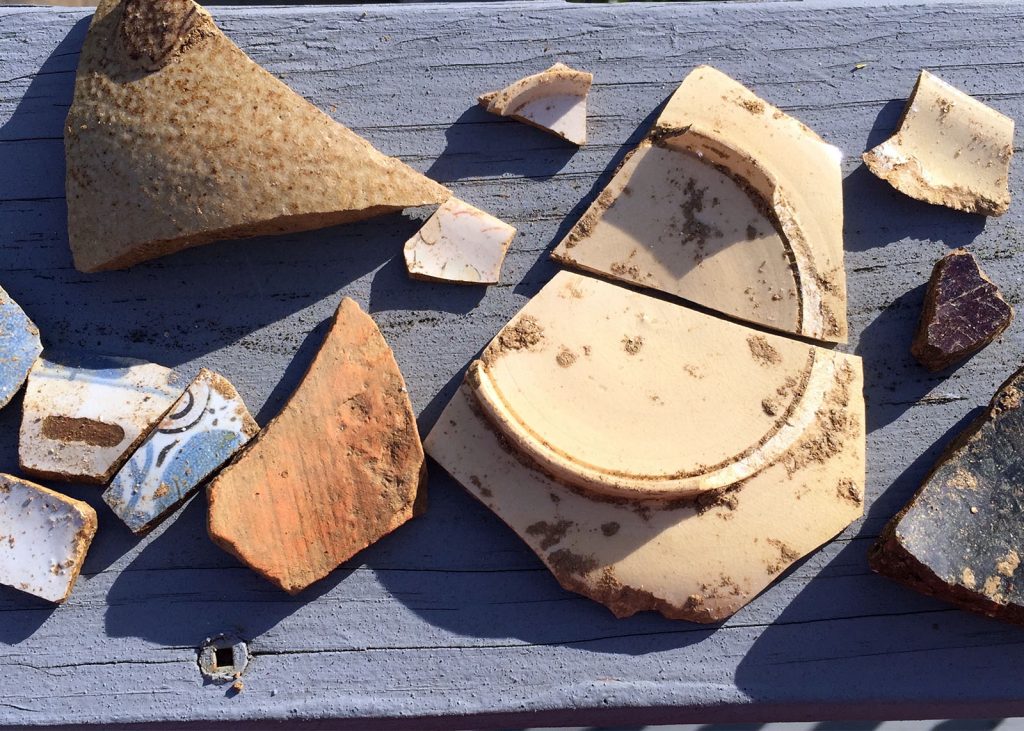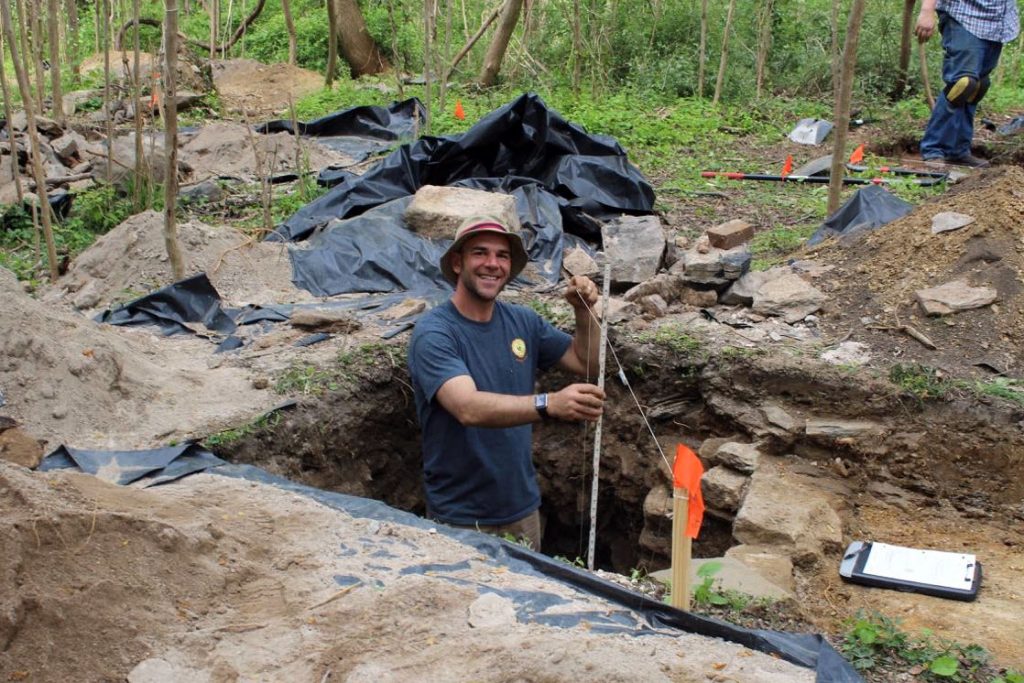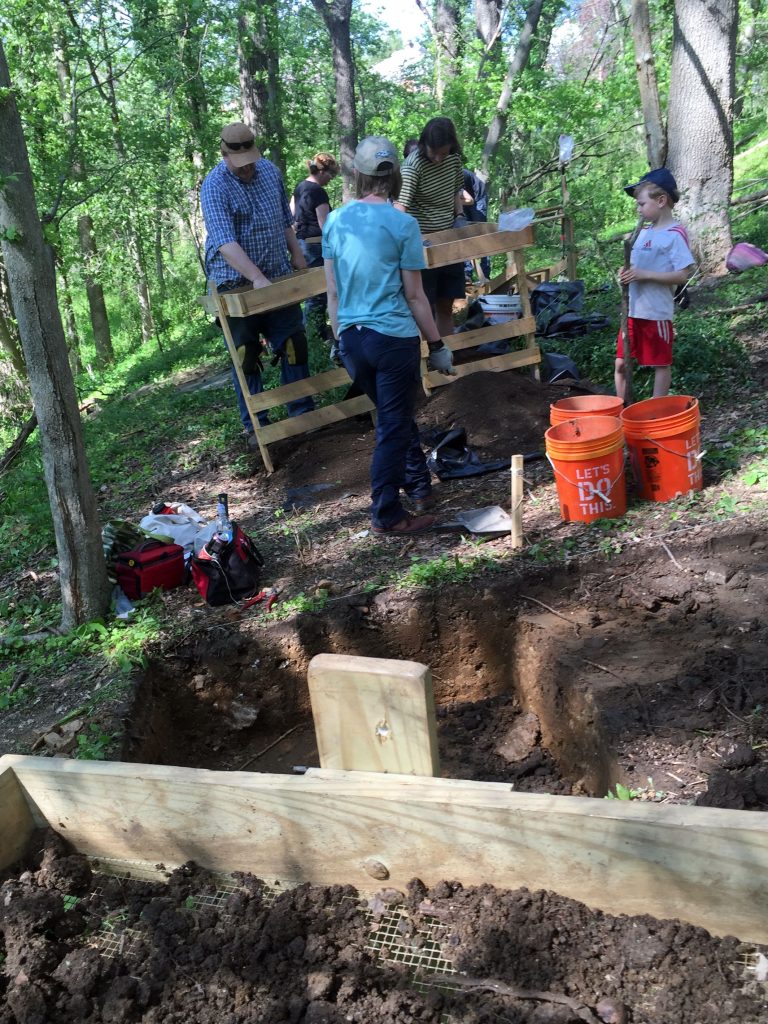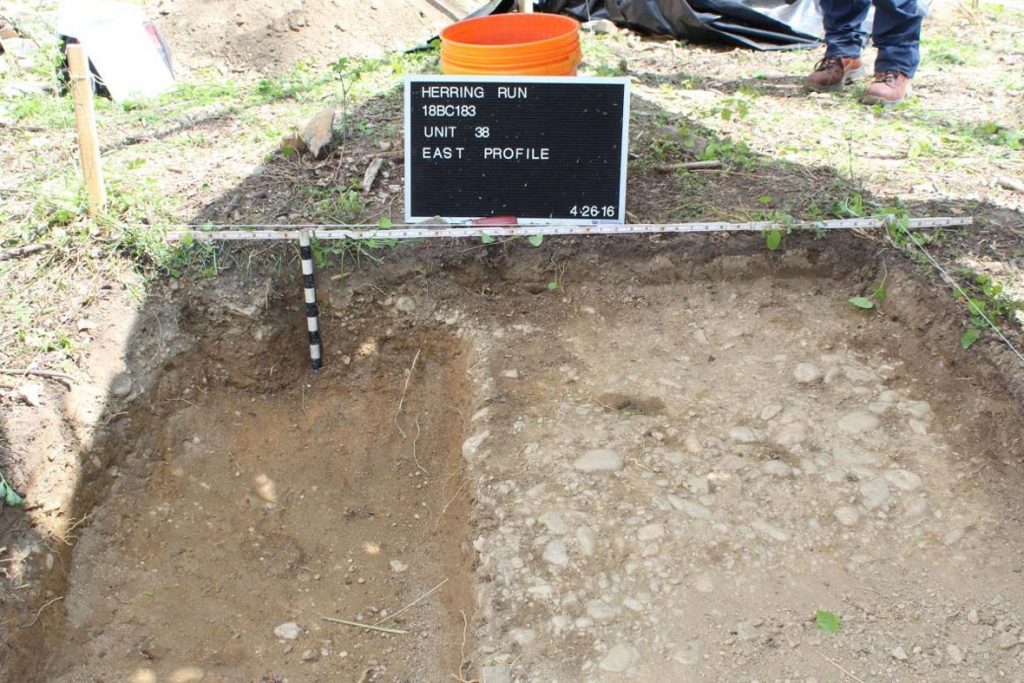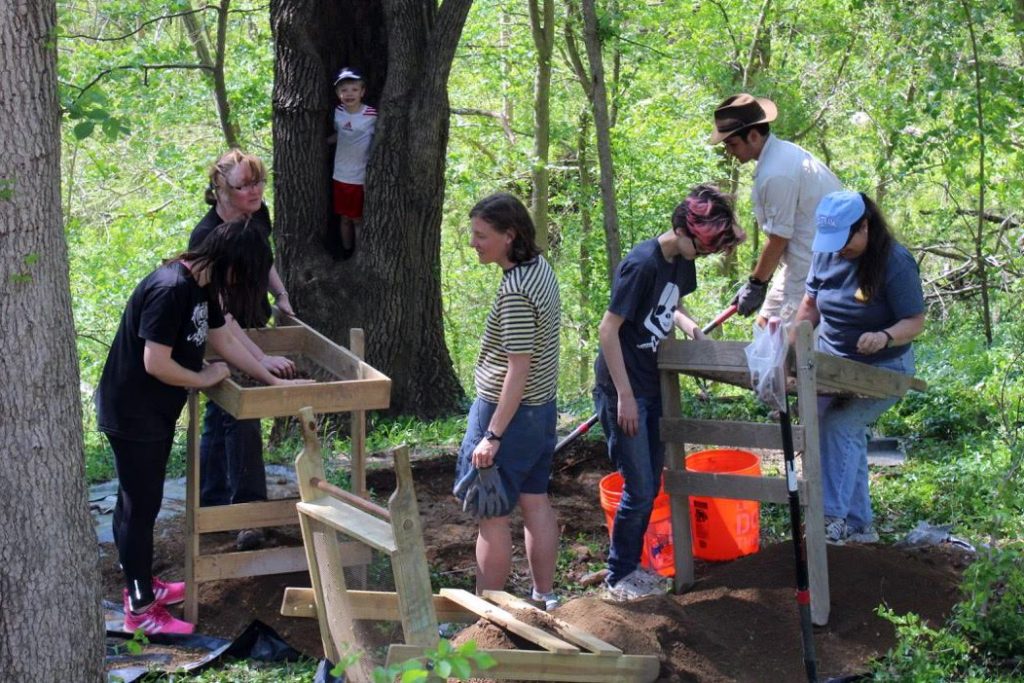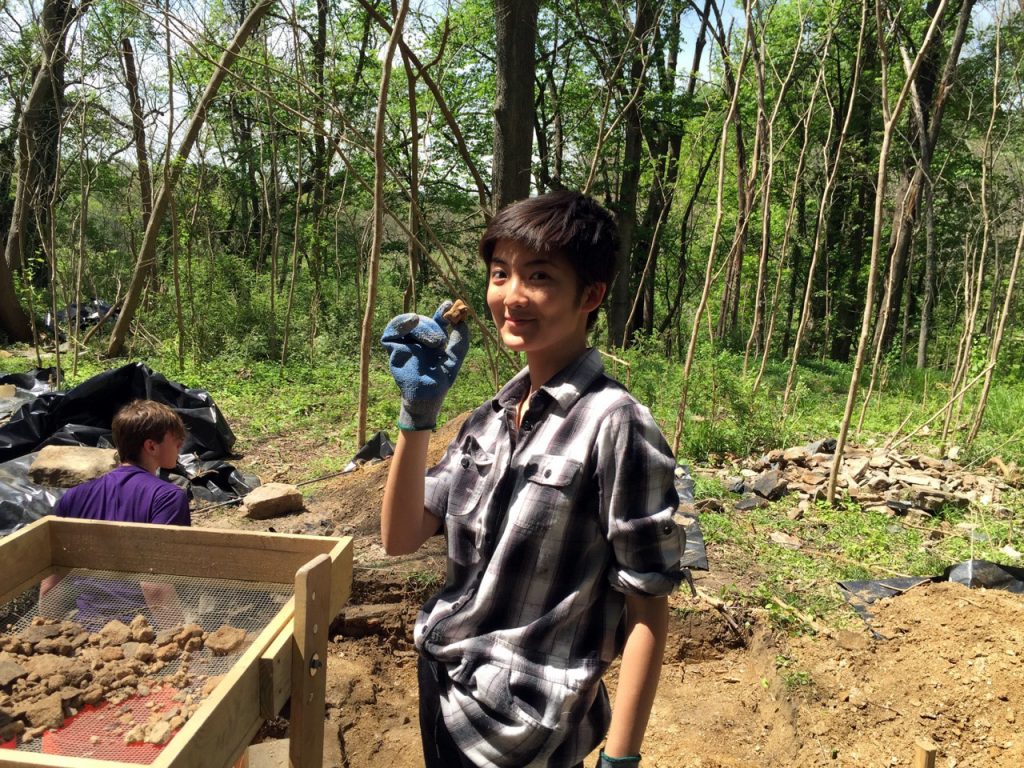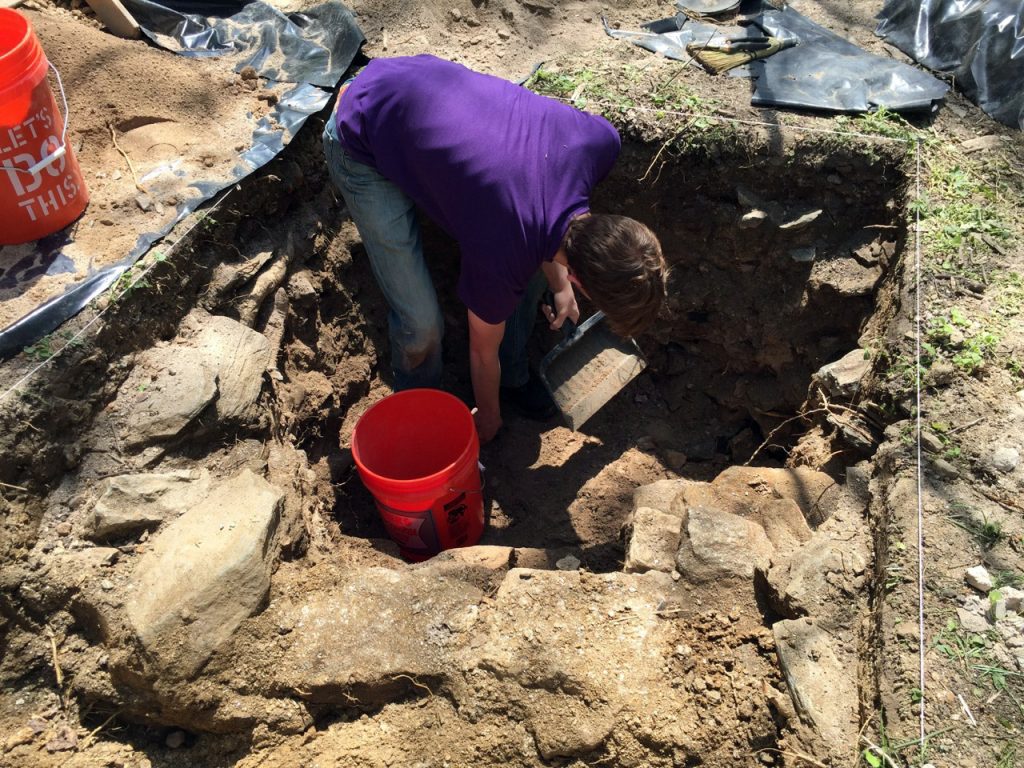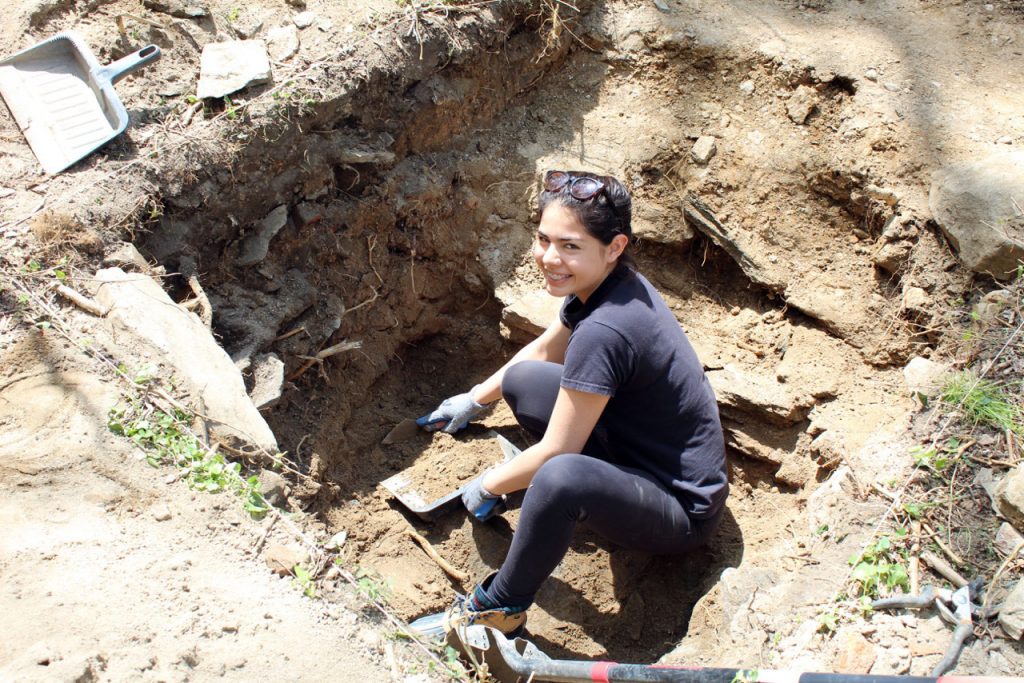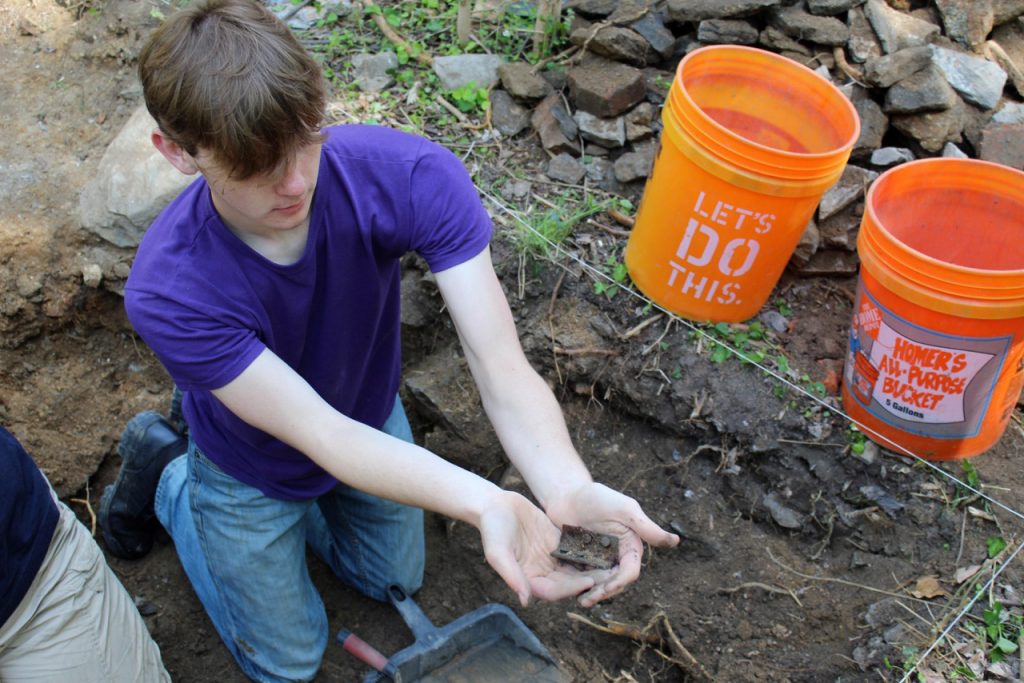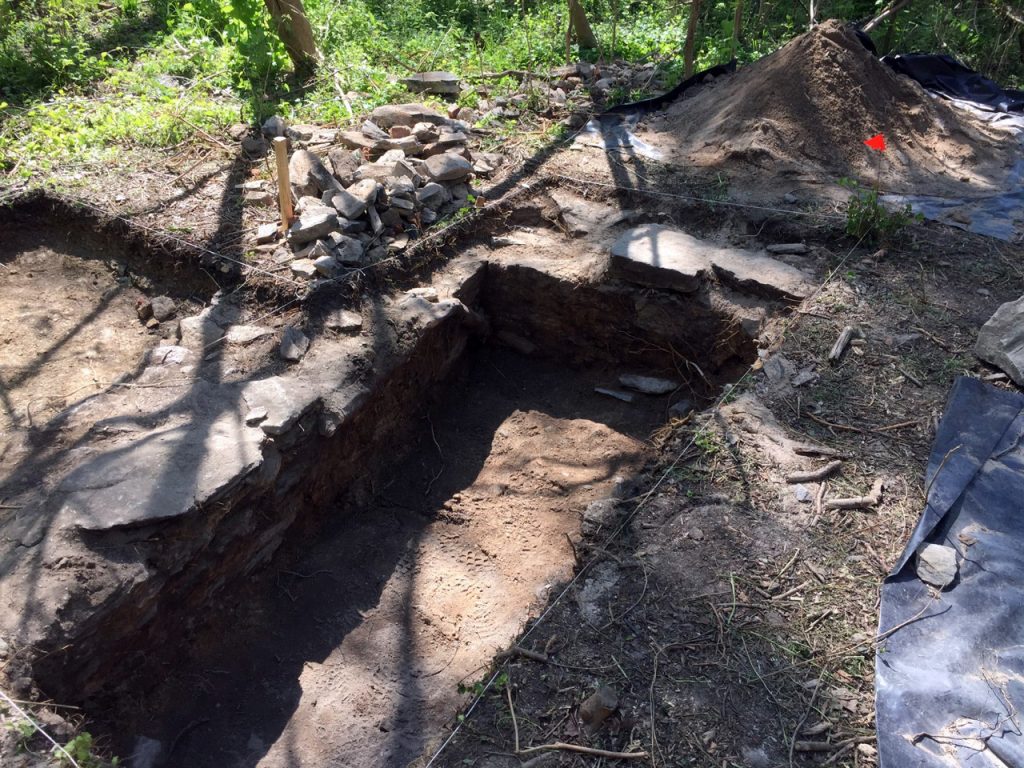Thanks to Lisa Kraus and Jason Shellenhamer for this final update from the 2016 field season for the Herring Run Archaeology Project. You can find their updates on our blog, the project website, and on Facebook.
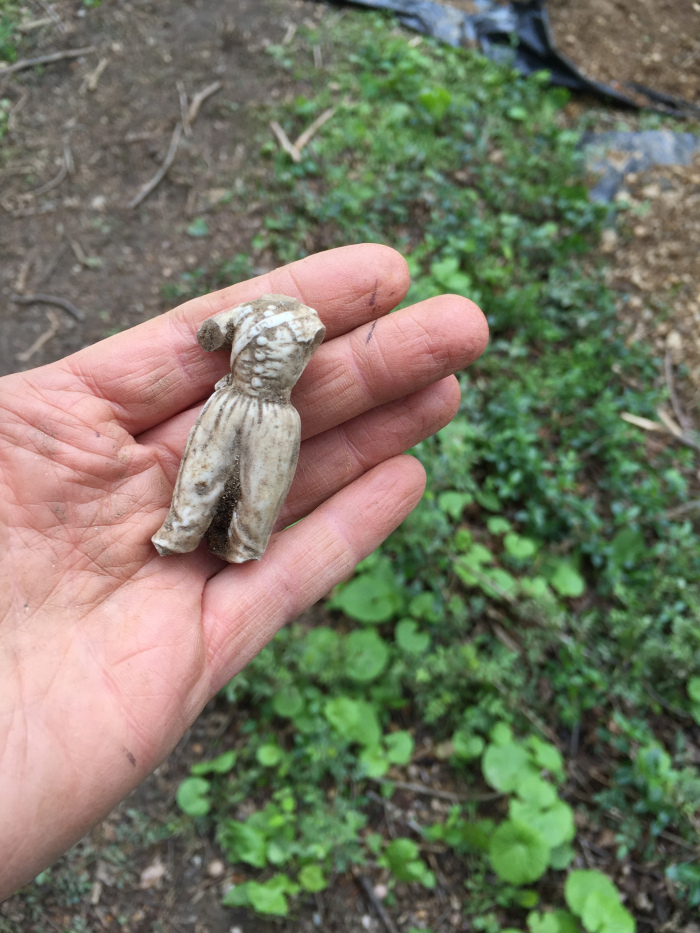
As we filled all our test units in yesterday, we were discussing all the things we’ve learned so far from our amazing week of excavations. Here are some highlights:
- We have the most incredible volunteers. This was an awful lot of hard work, and you guys were all so wonderful. We cannot do this without you, and we cannot thank you enough.
- The early Broad family occupation (1680-1742) is intact, and this is indeed where their house was located! We didn’t know this for sure until this week, and this is a huge discovery—the earliest and best-documented historic site in Baltimore City and County!
- We have significant evidence that the enslaved women and men who worked in the Eutaw manor house lived in the basement. We’ve discovered two probable hearths that would have provided heat and cooking fires, a subfloor pit that was used for food storage, and evidence of a laundry where Venus Tilghman worked. Finding evidence that relates specifically to Venus and Jeremiah Tilghman and the other enslaved people who made life at Eutaw possible has always been one of the major goals of the project.
- The Eutaw house had a tiled roof, decorative marble flourishes (a mantle or even a marble entryway), and elaborate window hardware.
- The house also had a finished basement! Many of the stone walls we uncovered this year still had plaster attached.
- In the yard, a path paved with river cobbles and pebbles led to the house, and much of the material excavated from the cellar during the house’s construction was used to build a terrace that surrounds the hill where the house was situated.
We also have plenty of new questions to guide our future work. So thank you again to all our volunteers, visitors and supporters for another successful year!
